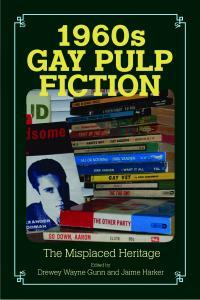 1960s Gay Pulp Fiction: The Misplaced Heritage
1960s Gay Pulp Fiction: The Misplaced Heritage
Edited by Drewey Wayne Gunn and Jaime Harker
U-Mass Press. 304 pages, $27.95
IN THE EARLY 1950s, the New York publishing company Greenberg was convicted of sending obscene materials through the mail. The publishers were fined and the books were effectively banned. The offending texts were three gay novels (none with explicit sexual content): Quatrefoil (1950), by James Barr; The Invisible Glass (1950), by Loren Wahl; and The Divided Path (1949), by Nial Kent. The federal government’s crusade against what J. Edgar Hoover (or his ghost writer) called “the tainted temptations of muck merchants” continued into the 1960s. In 1961 alone, there would be almost 400 convictions for the same offense. But a series of rulings by the Supreme Court in the late ’50s and early ’60s, plus the unprecedented accessibility—and visibility—of inexpensive pulp paperbacks, radically changed the rules of the game.
Ian Young is the author of Out in Paperback: A Visual History of Gay Pulps (MLR Press) and Encounters with Authors (Sykes Press).






